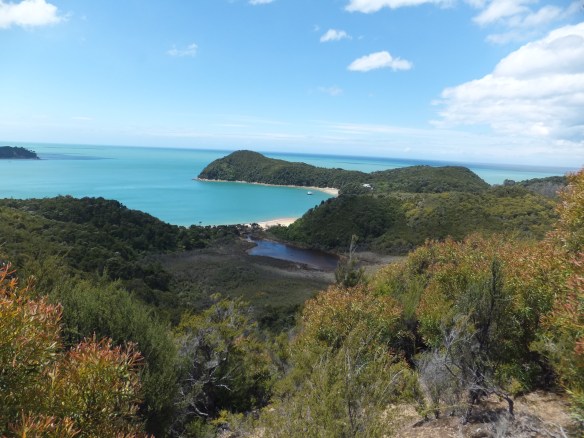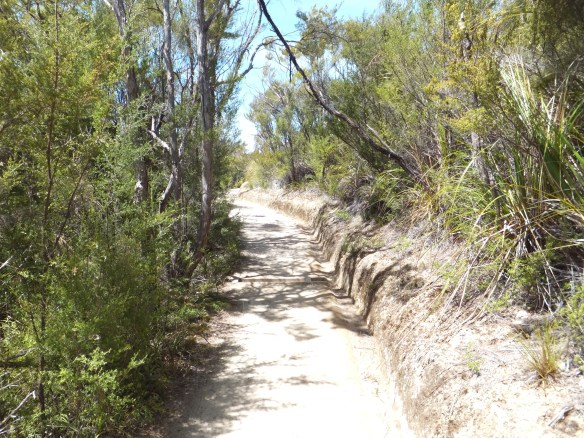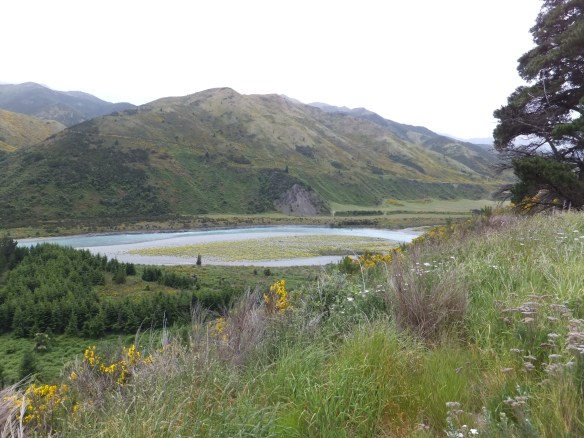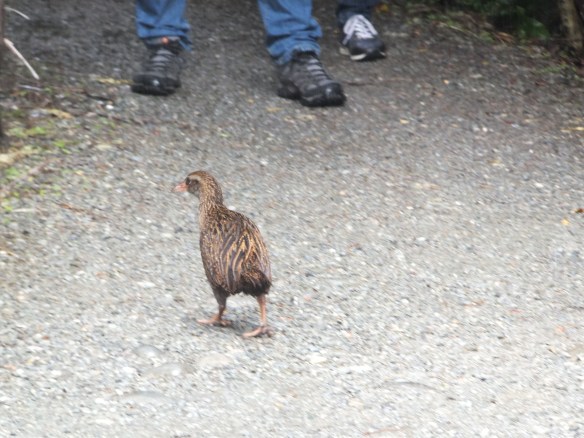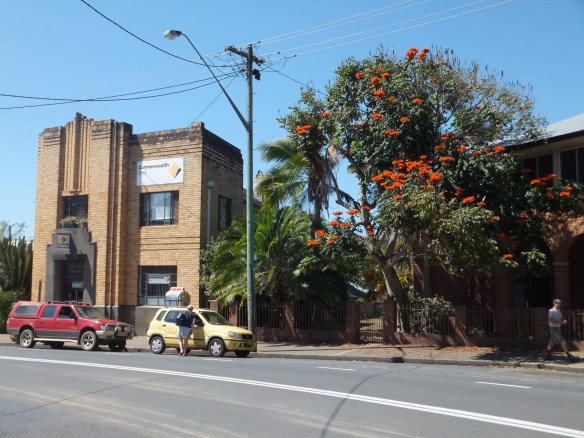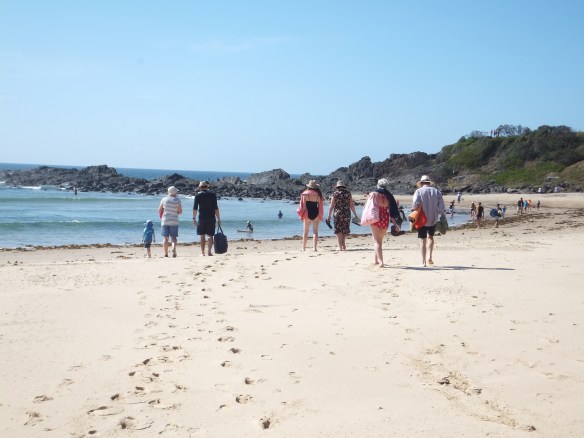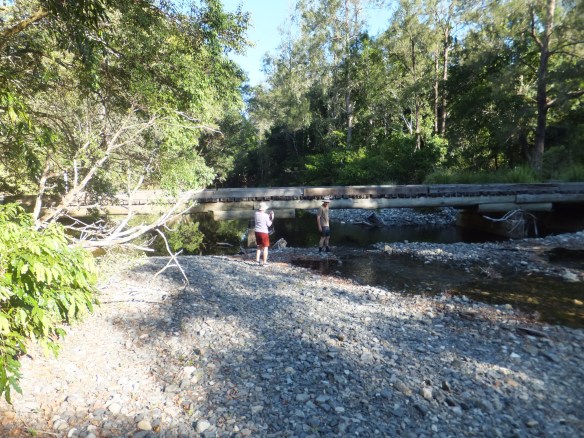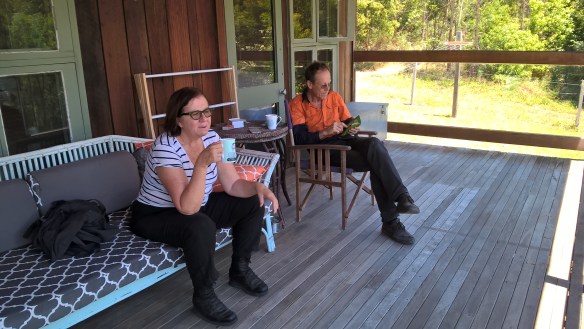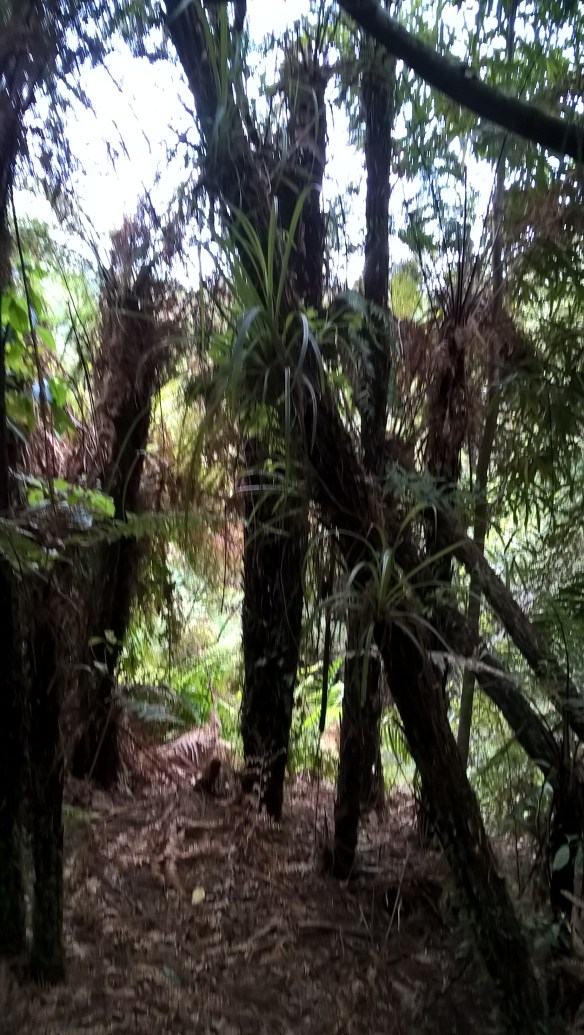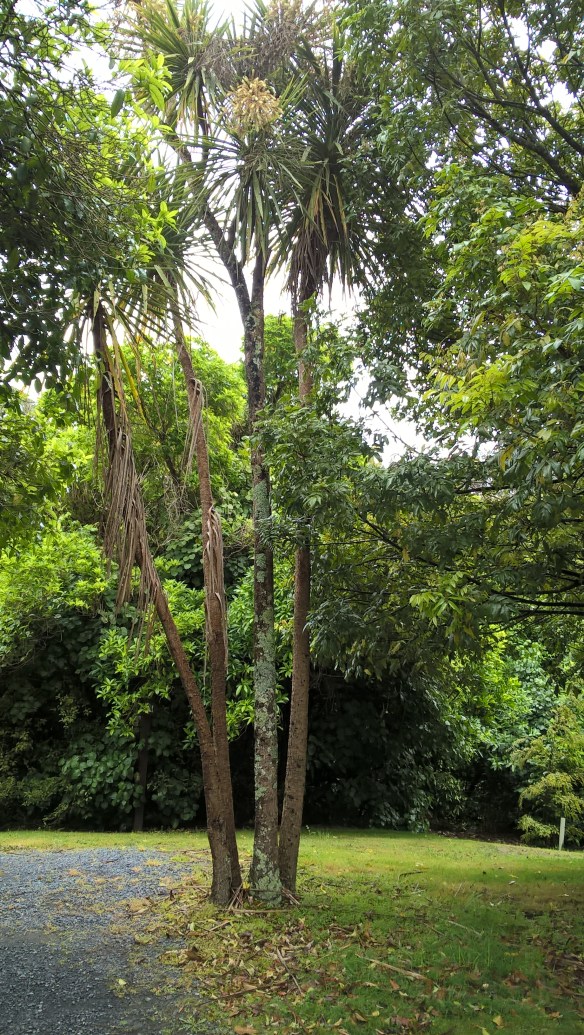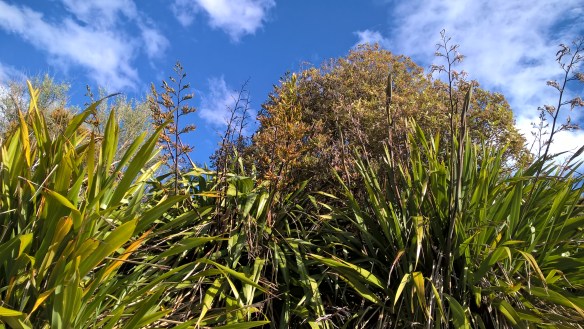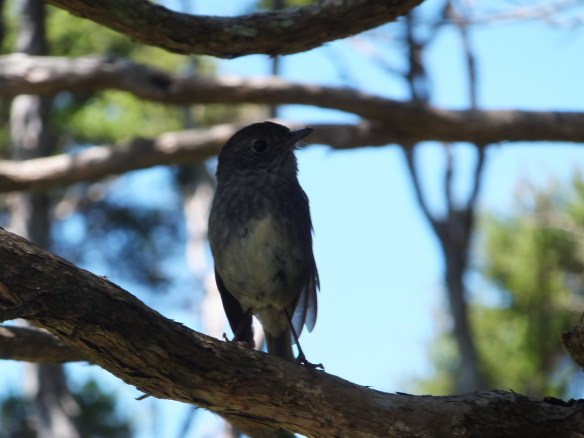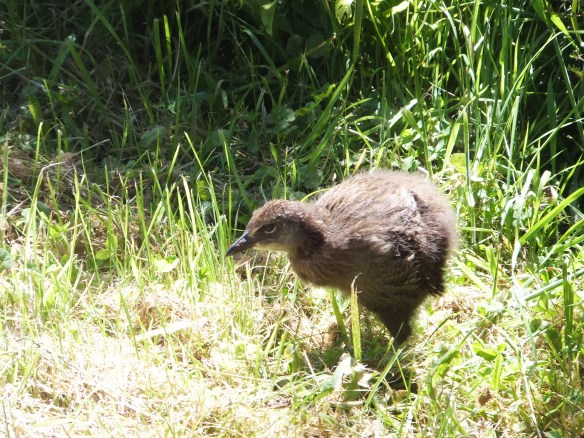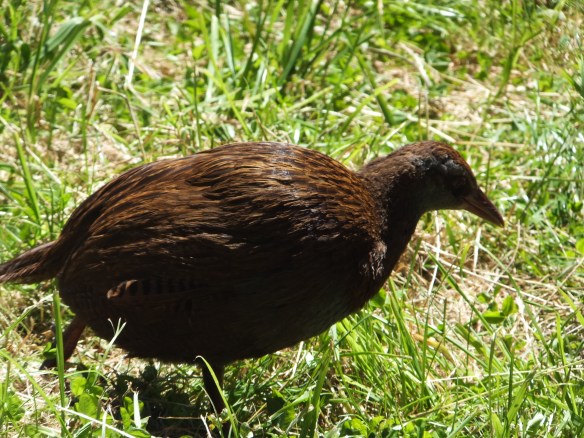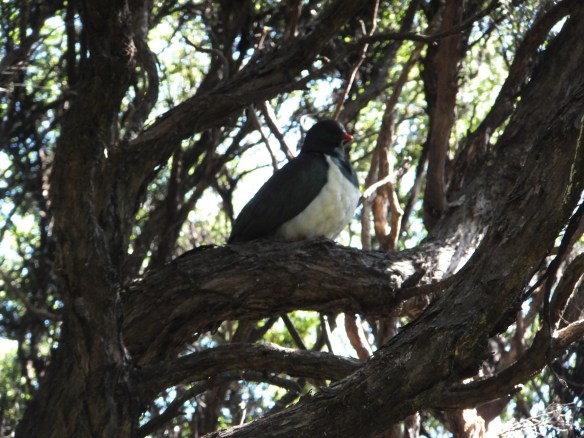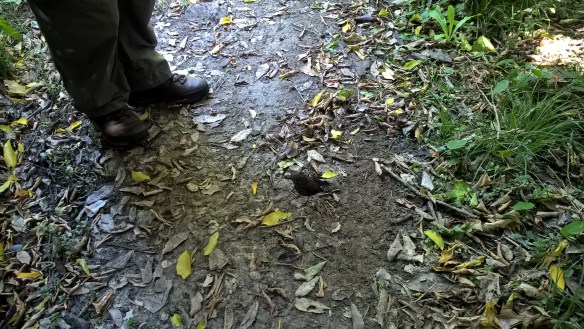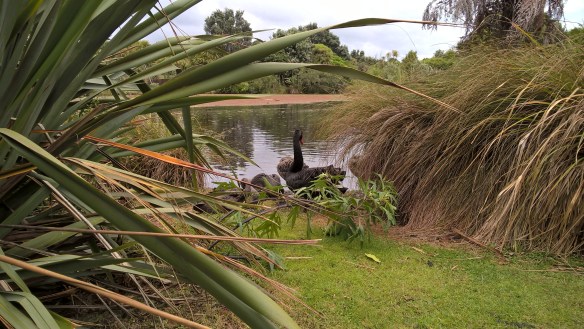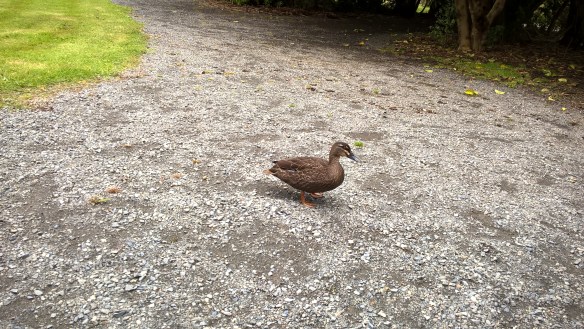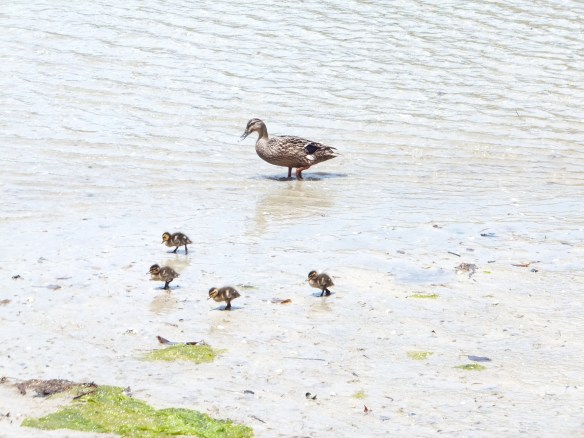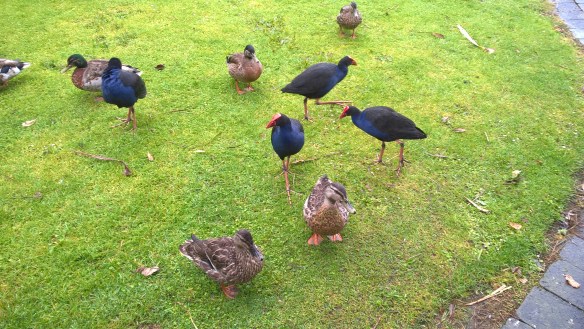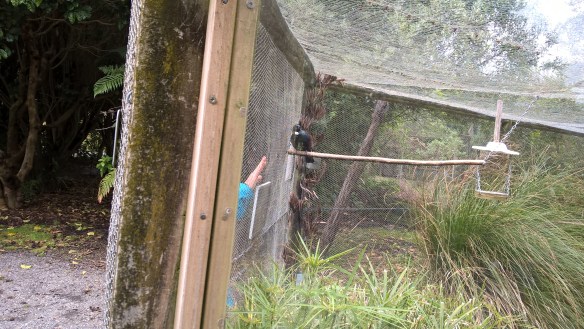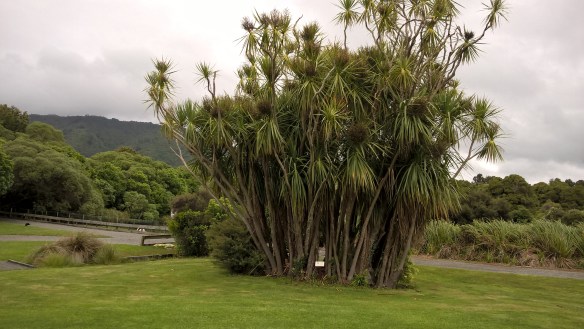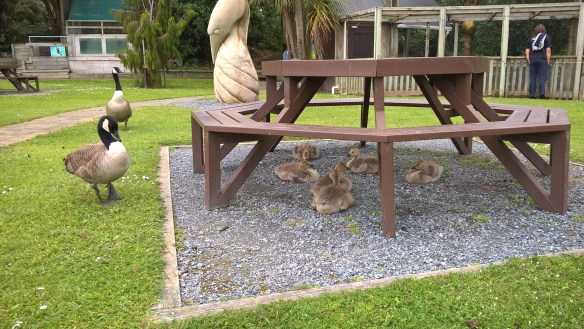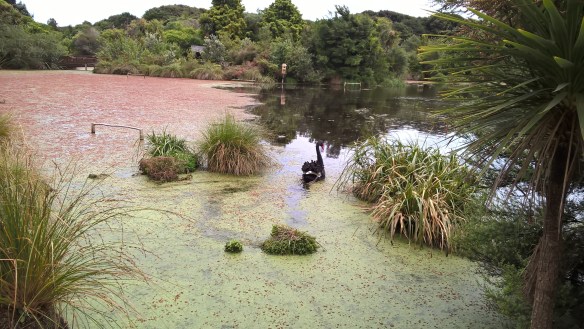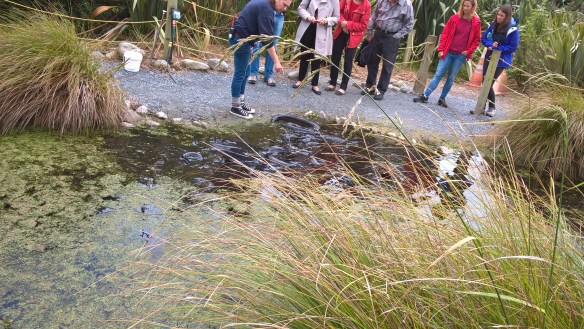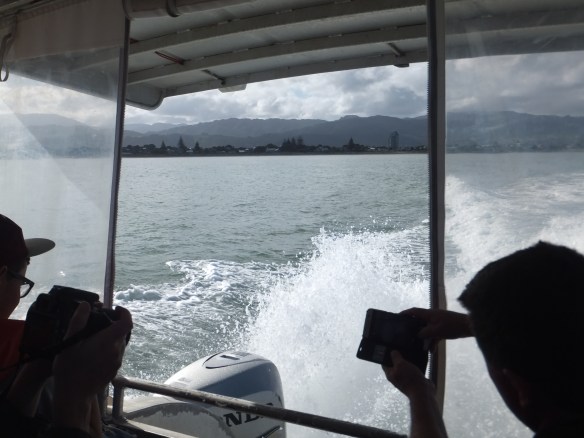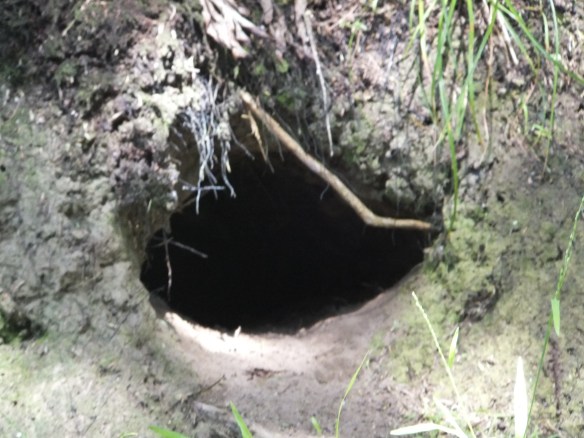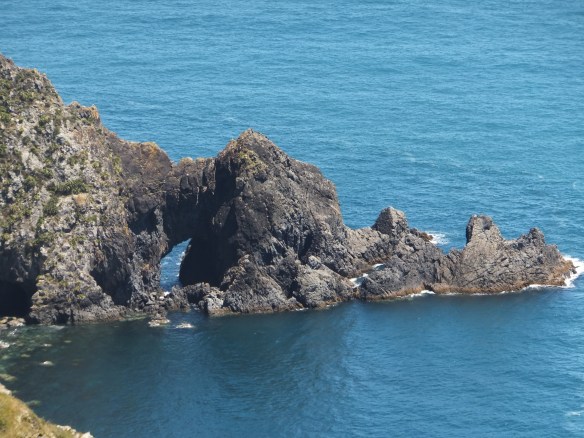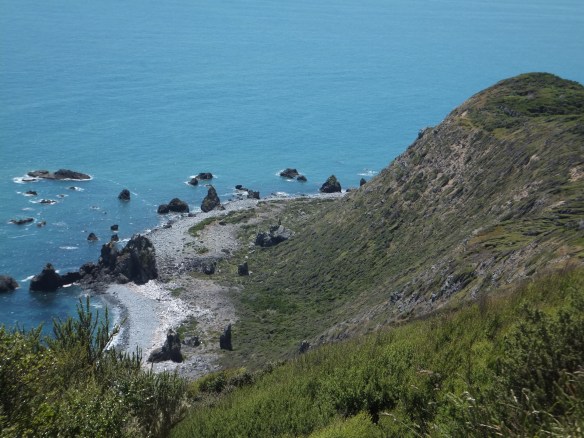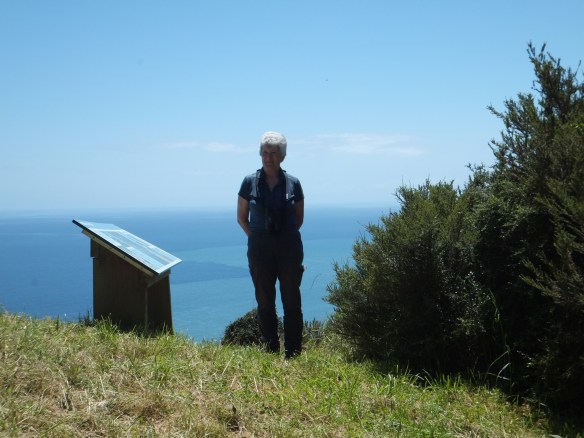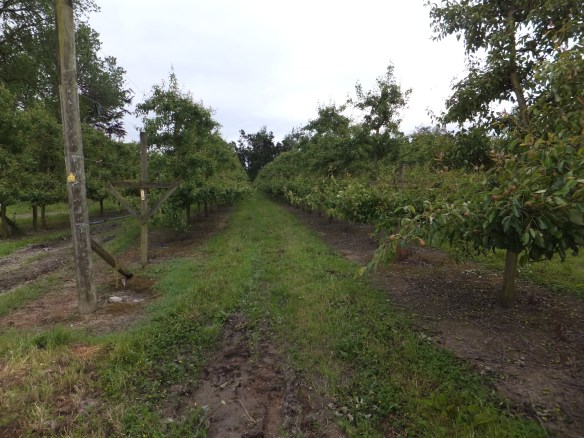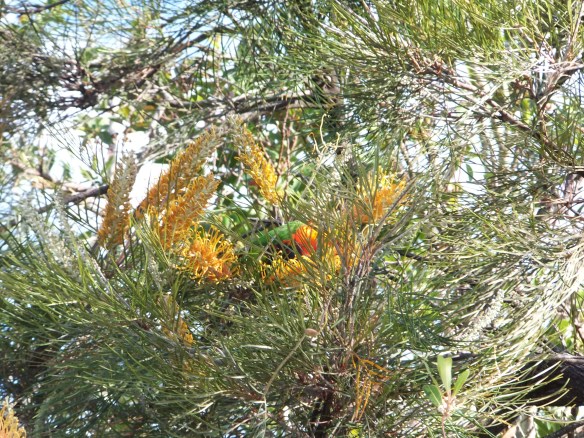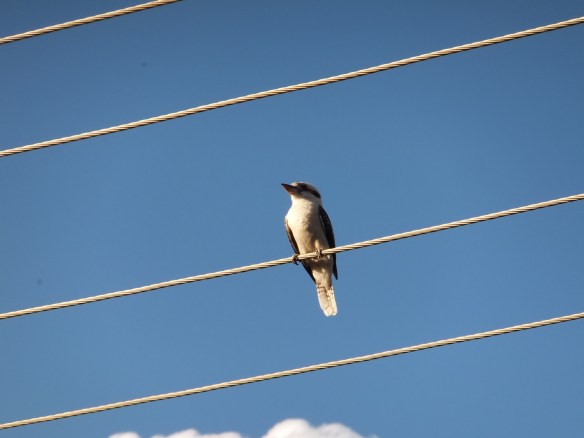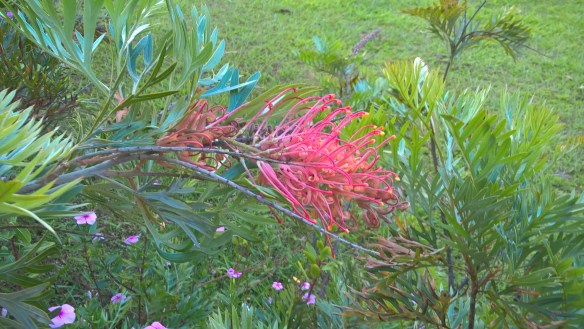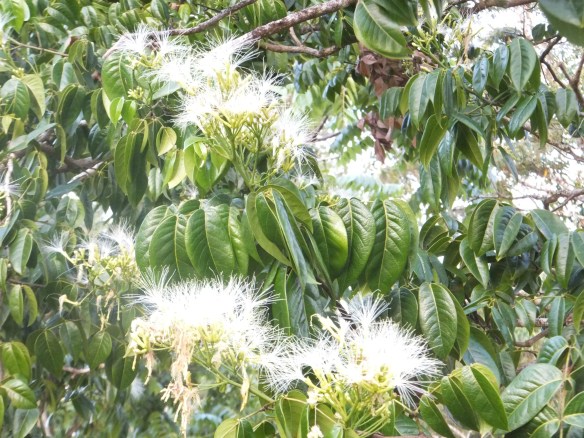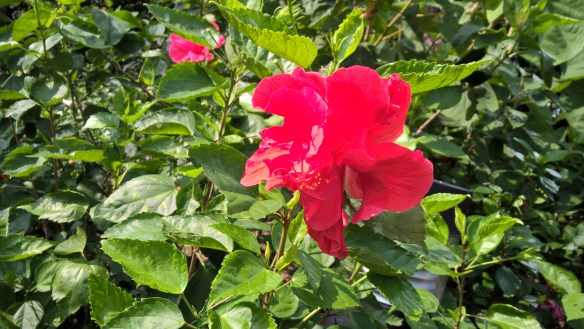
Auckland from the ferry to Rangitoto
Having stayed with Alan and Rachel three years ago we felt quite at home in both the house and the area. We had only a few days with them this time, but we still managed to pack in quite a lot.
Alan had kindly arranged a special outing for us: a small-group guided nature tour with Habitat Tours, run by Tristin, a delightful and knowledgeable young man. (Highly recommended if anyone is in the area!) We went on the so-called day/night tour to Tawharanui (the wh is pronounced f) regional park, a fenced and thus pest-free headland with beautiful beaches and interesting wildlife. You have to be very careful when entering the reserve not to bring in any kind of rodent or other pest, as these are serious predators of the flightless birds. When we arrived it was a lovely sunny afternoon, and there were several groups of students on the white sandy beaches, enjoying having finished their exams and started their long holidays.
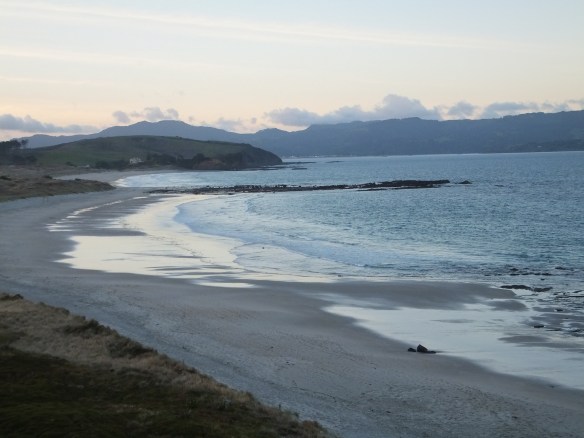
An evening view of the beach
On our first guided bird walk we saw and heard several native and endemic birds, some for the first time, including NZ dotterel, a wader, Bellbirds, which really do sound like the beginning of a peal of bells, Saddleback – and three Takahe. We learnt that there are fewer than 300 of these still in the wild! So they are far rarer than Kiwi.
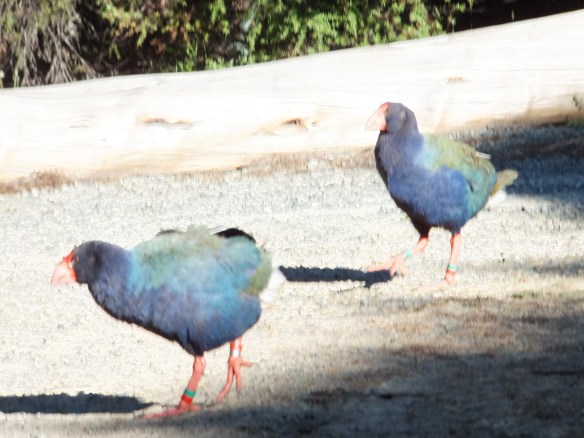
Two Takahe crossing the path just in front of us
There were also many native trees, including several good-sized Kauri. We made our own way back to the car while our picnic supper was being prepared, enjoying lovely views out over the sea.
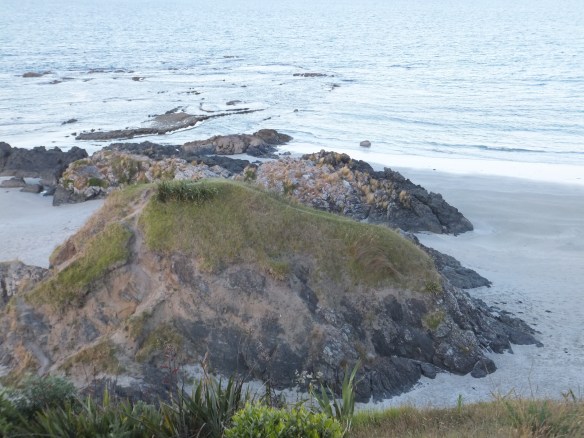
On our way back for the picnic
We also saw a small colony of Australasian gannets, and large numbers of Pukeko wandering around. Like the Weka they seem very friendly and inquisitive, but both birds have the unpleasant habit of eating other birds, nestlings, fledglings and eggs.
We had a delicious picnic supper, home-cooked by Tristin’s mother. We even tried a local speciality, Manuka tea. (Manuka is mainly known for the honey produced from its rather pretty little flowers.)

The picnic supper
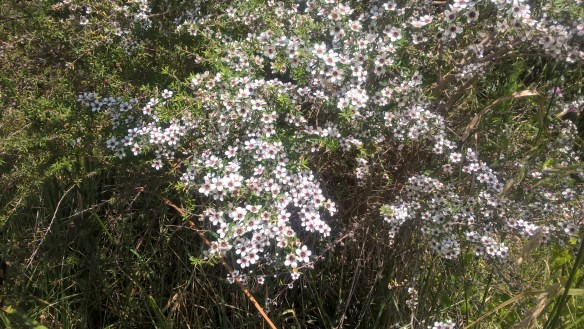
Manuka blossom
After supper we wrapped up warm, took our head-torches, and set off in search of nocturnal creatures. Quite a few Eastern rosella ( a colourful and noisy parrot, though we couldn’t see the colours in the dark) were flying in to roost. We heard Morepork, the NZ owls, but didn’t see any.
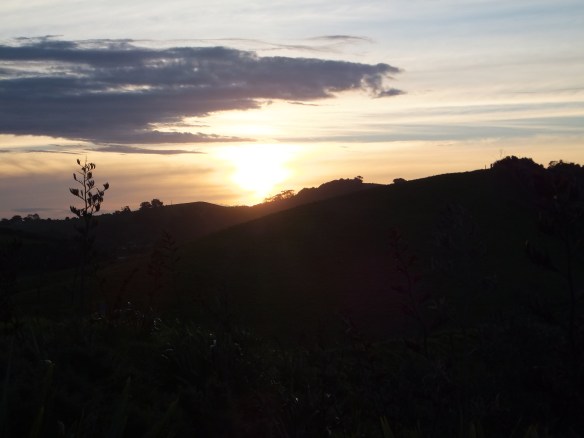
Sunset – time to look for Kiwi
Of course we were all holding our breath for Kiwi. Once we in the woodland we all moved as quietly as possible, listening for rustling in the undergrowth, and fairly soon we heard the right sort of noise. There in the bush down below the path we saw the round and furry-looking rear end of a Brown Kiwi! He turned his head slightly so that we caught sight of his beak, and then disappeared in search of food. As well as being flightless, Kiwi are also very short-sighted and rely heavily on their sense of smell. Uniquely, their nostrils are near the tips of their beaks. Feeling very pleased, we headed for a stream where we might find eels. As we were leaning over a small bridge we once again heard rustling, and there on the bank was another Kiwi. Unbothered by our (red) torch lights, he rootled around for quite some time, at one point standing up on his toes to stretch up into a low shrub, looking like a funny little man with no arms. Once he had disappeared we made our way back to the car, and were driven back to Takapuna, all most satisfied with a really enjoyable visit to a fascinating and beautiful place.

The weather the next two days was a bit grey and damp, so we felt even more how lucky we had been in Tawharanui. One day we took the ferry across to Auckland city; the next day Alan drove us to near Hamilton, where he had business, and where he has family. He dropped us at Horotui (pronounced roughly horror two) some 12 kms from the city, and we walked along the Waikato River path for about three hours. It was a pleasant walk, but we were very glad to meet Alan and have lunch in a cafe.

Approaching Rangitoto Island
On our last full day in Auckland we were again lucky with the weather. We had decided to visit the youngest volcano in the area: Rangitoto, a mere 600 years old. Rangitoto is a classic volvano shape: it’s almost circular, rises to a cone in the centre, and is covered in pumice and dusty grey rocks and stones. Over time plants and trees have become established, sometimes just a clump in the middle of the grey waste, but in other places providing quite extensive cover.
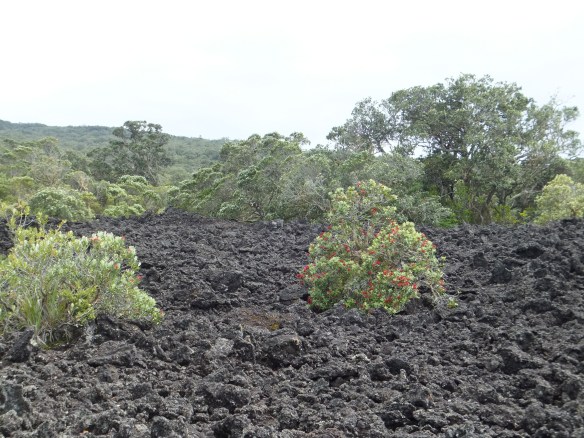
Typical vegetation

Part of the walkway to the top
The climb to the top was quite steep, and already it was getting quite warm, but the views all around certainly made it worthwhile, and we felt we deserved our picnic lunch.

The view over Hauraki Gulf from the top of Rangitoto
We had a rather hot, dry walk back down, making sure we were back in good time for the last ferry. But the landscape was fascinating and contrary to expectations we saw and heard many birds: lots of Tui, and the ubiquitous house sparrows, which seem to have adapted to any imaginable habitat, as well as our only sighting of a Tomtit.

Katharine on the path back to the landing stage

The ferry
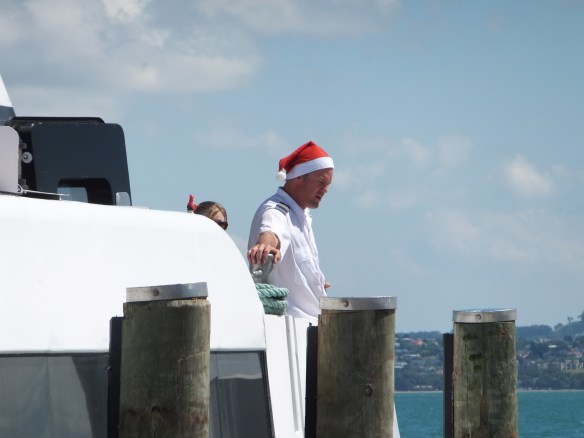
It’s nearly Christmas!
The following day we packed and went out for a last New Zealand coffee, and then Alan drove us to the airport for the long journey home, via a short stopover in Hong Kong. We knew England would be cold and grey, but we had had another terrific holiday meeting old and new friends and seeing interesting places and wildlife – and there were only three weeks till Christmas.
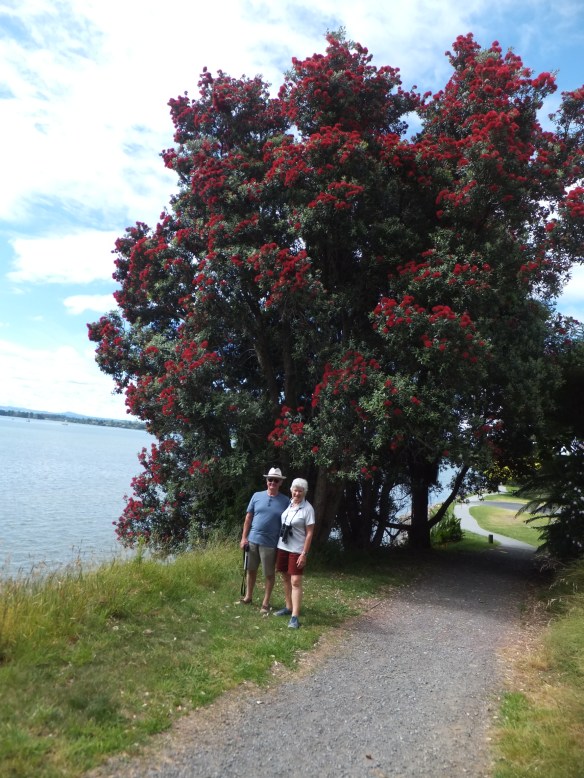
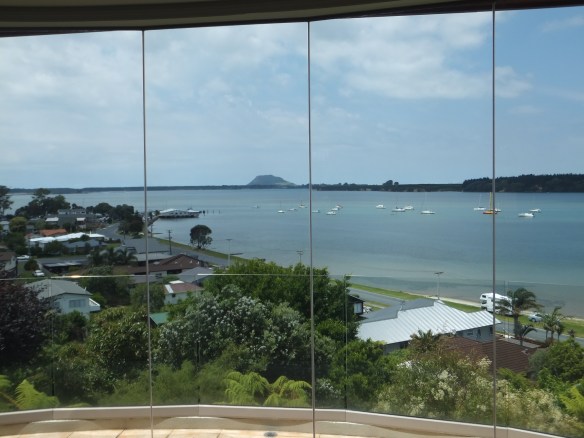
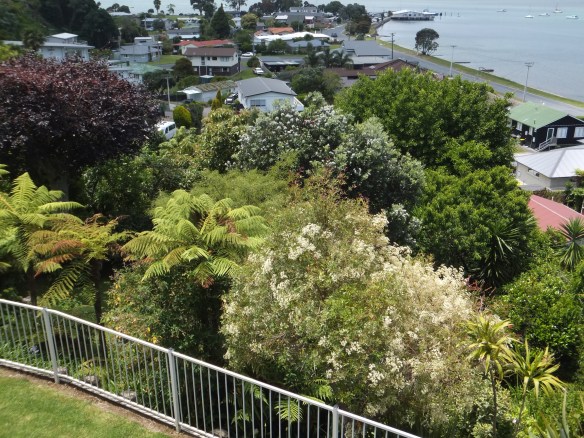


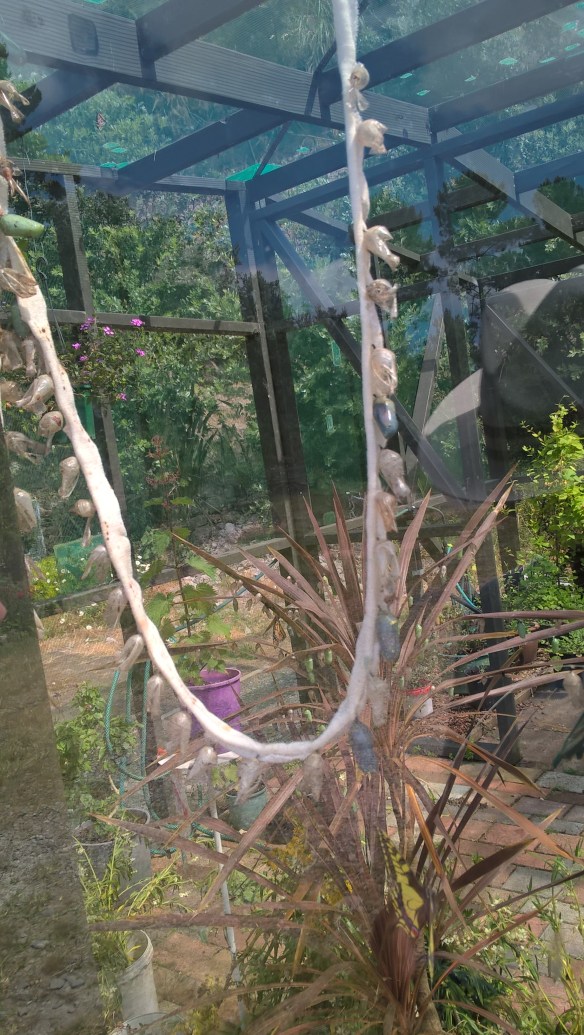
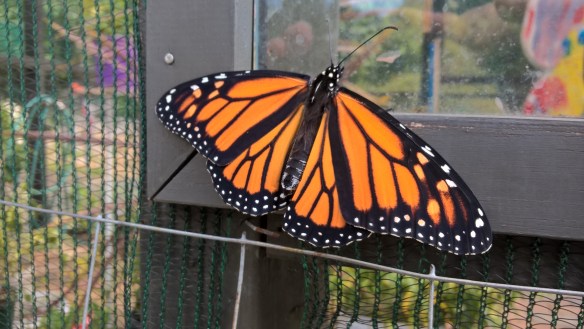

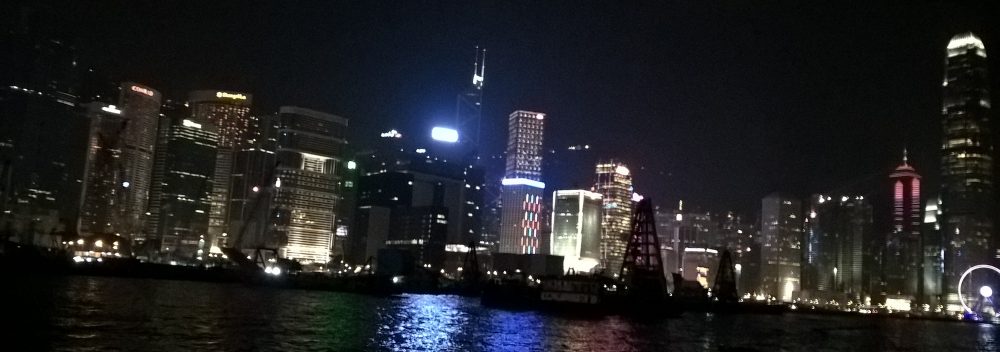





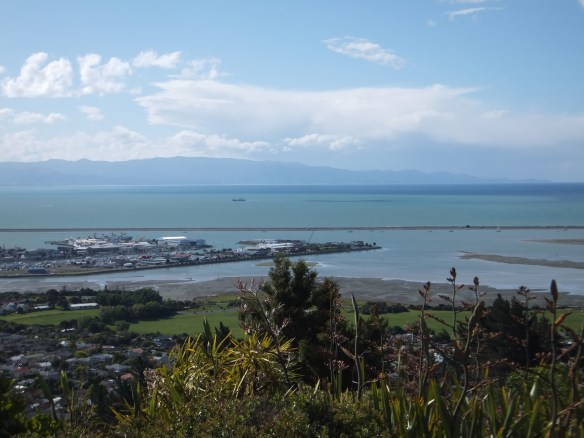
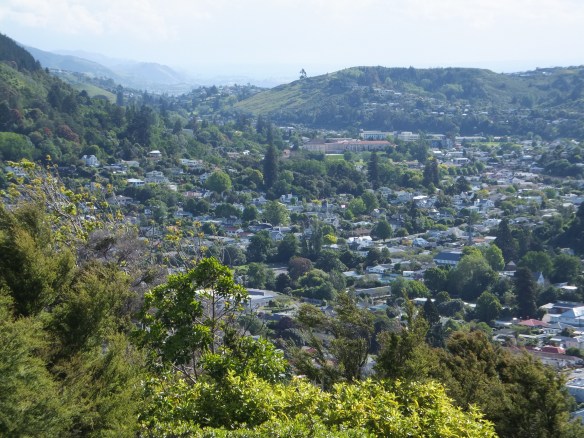

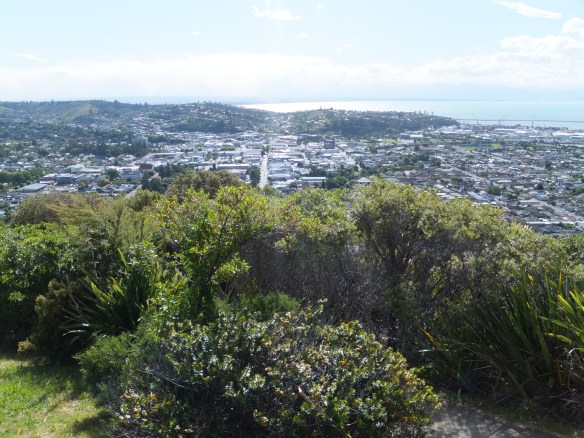

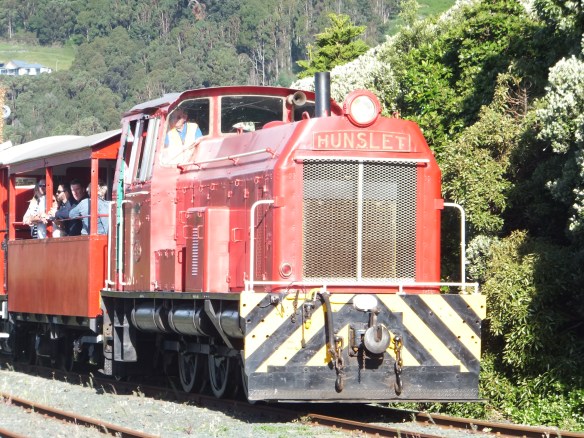
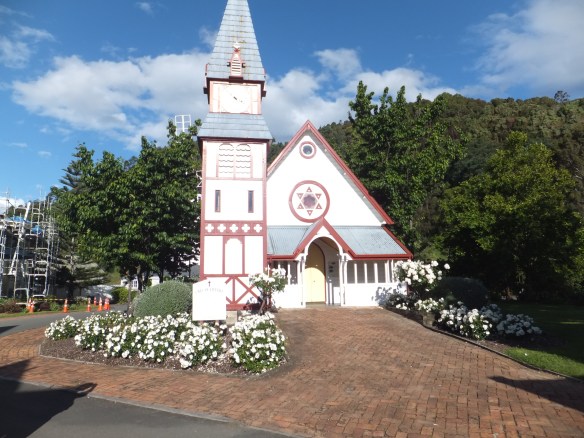 The old church in the Heritage Park
The old church in the Heritage Park





